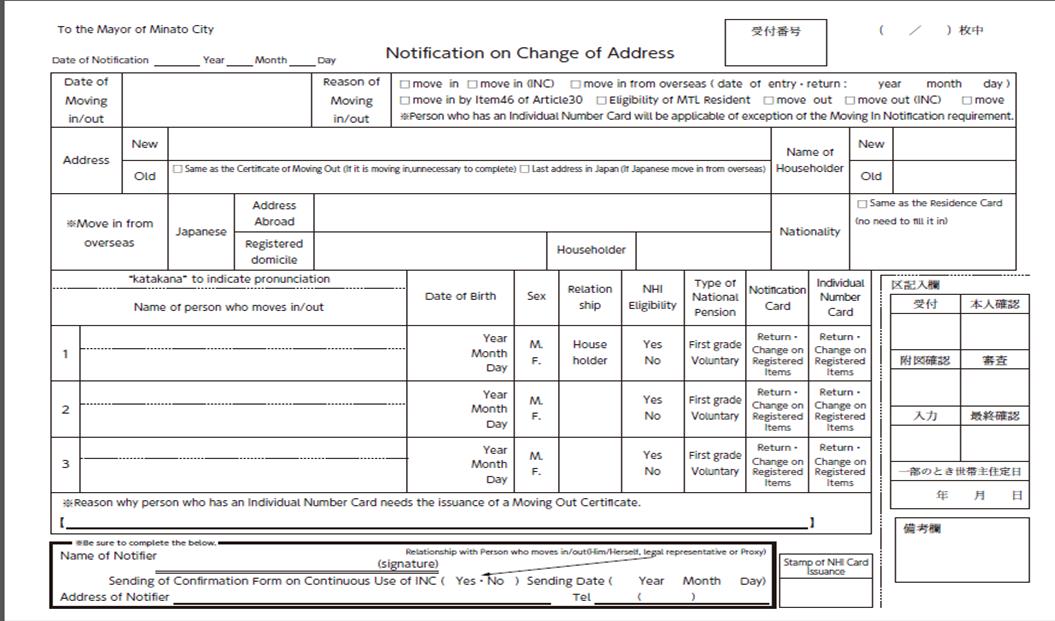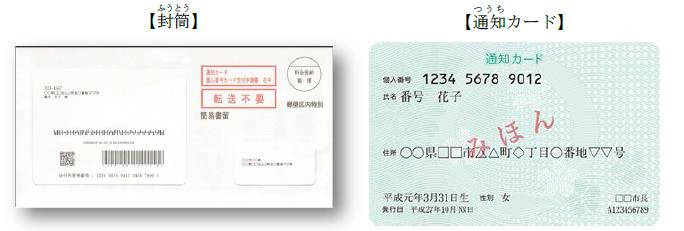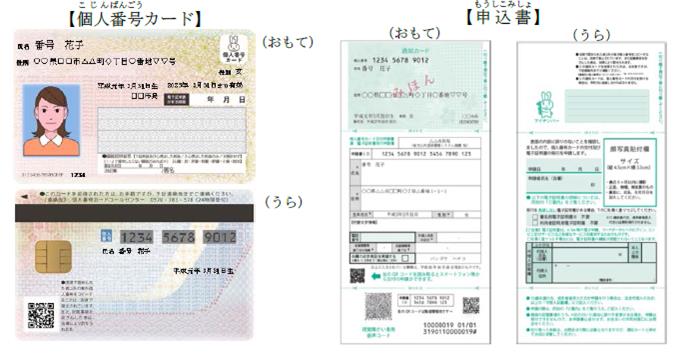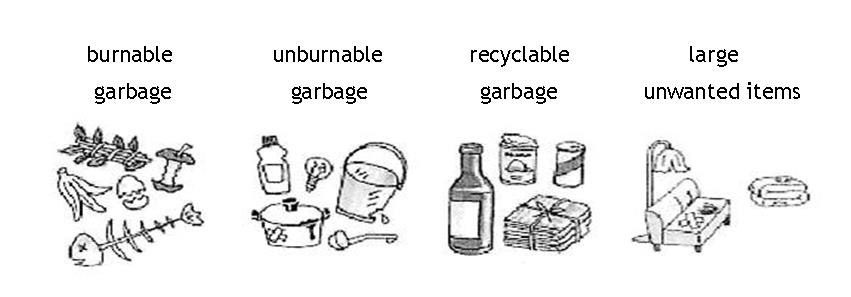LIVING IN JAPAN
- When moving
- Individual Number Card
- National Health Insurance Card (Kokumin Kenko Hoken)
- National Pension System
- Visa Renewal (Change of Visa)
- Utility contracts
- Bank Account
- How to Make a Phone Call (Domestic/International)
- Cell Phone
- How to Access the Internet
- Public resources
- Garbage disposal
1. When Moving
Before moving from your current municipality to a different municipality, you must submit a Moving-Out notification (jyumin idou todoke) to your current City Hall. This notification will be inscribed on the back of your Residence Card and record. This notification can be submitted up to 14 days before moving or after moving (by mail). After you submit this document, you will receive a Certificate of Moving-Out, which you must submit to your new municipality (City Hall) within 14 days along with the Moving-In Notification. Your new address will be written on the back of your Residence Card.
Jyumin Idou Todoke (Notification on change Address)
When you move into a new apartment, the post office might check who is living at your new place before they start delivering mail. They will send a postcard, on which you must write your information, along with that of the other tenants. After sending the postcard to your local post office, you will be able to receive mail.

2. Individual Number Card(Kojin Bango/“My Number”)
The “Individual Number Card” began on January 1, 2016. Foreigners who can register as residents also receive one. After registering an address at city hall, the 通知カード (“Tsuuchi ka-do”, notification card) is sent to that address by registered mail.
The Individual Number card made through the “My Number” system allows individual identification through one document. It allows proof of identification in a wide array of uses.
To receive an Individual Number card, fill out the necessary information on the application card and submit it with the notification card.

Examples of using “My Number”
- This information must be submitted to a workplace for tax or social security processes, and the creation of a tax certificate slip.
- ”My Number” is used by securities companies, insurance companies, and in courtroom proceedings.
- The Welfare Ministry uses “My Number” to process pensions.
Points of caution involving “My Number”
- It is illegal for unauthorized people to collect “My Numbers”. Do not share yours indiscriminately.
- As a rule, foreigners leaving Japan who do not plan to live in Japan again should surrender their Individual Number Card and Residence Card when leaving the country. If they decide to live in Japan again, the card will be re-processed with the same number as before.
- As the “My Number” system makes it easy for institutions to understand a person’s background, previous non-payment of taxes or other infractions may lead to a negative decision when applying for an extension of stay in Japan, visa, or other official registrations.
3. Insurance and Pension (Shakai Hoken)
You will be enrolled in 社会保険 (“shakai hoken”, social insurance). This covers both health insurance coverage as well as pension, and payments for this are deducted from salary, usually in the range of 40,000 yen monthly.
- You will receive a blue insurance card. This should be kept at all times.
- Pension payments are made into an account that can be collected upon retirement. You will receive a blue booklet for this record.
A sample of the Residence Card
Please be aware of your cards’ expiration dates. They may be written in Japanese era years, not Western years. 令和 (Reiwa) is the current era. It started on May 1st, 2019 (令和1年5月1日). To find the Reiwa year, take the two digits after the “20” in the Western year and subtract 18. 2019 becomes Reiwa 1, and 2020 is Reiwa 2. 平成 (Heisei) was the era until April 30th, 2019. To find the Heisei year, take the two digits after “20” and add 12. January 2019 was January, Heisei 31.
In the event of injury or sickness sustained from causes unrelated to work, the insured person is entitled to medical services with the presentation of the insurance card at any medical care facility. If presenting the card appropriately when checking in, the insured person pays 30% of the medical care cost at the source and 70% is automatically deducted. (A final bill reflects the deducted amount, so that bill should be paid in full.) Present your health insurance card at reception whenever you visit a medical care facility. Keep in mind that, in principle, preventative treatments are not covered by insurance.
Some examples of treatments covered by Health Insurance include:
- Emergency medical examination
- Provision of medicines or medical care supplies
- Emergency treatment, surgery and other forms of medical attention (including necessary emergency dental treatment)
- In-home medical care
- Hospitalization and nursing care
Some examples of treatments not covered by Health Insurance include:
- Preventative medicine
- Unnecessary physical check-ups
- Cosmetic surgery
- Unnecessary dental procedures (including non-standard ceramic or gold crowns or fillings)
- Unnecessary eye exams and eyewear
- Exams and check-ups for normal (without complications) pregnancies
For work-related illness and injury, the Employee will be covered by Workers' Accident Compensation Insurance System (“rodosha saigai hosho hoken” or “rosai”, for short), If unforeseen circumstances occur where medical insurance cannot be used, or if the insured has received medical care at a medical institution other than a recognized medical care facility and therefore had to pay the full medical costs, the costs will be reimbursed, minus the 30% share of the insured party. However, the amount of reimbursement is calculated in accordance with a predetermined table of points for social insurance medical care fees and so may not correspond exactly to what the insured person originally paid. To prevent inconveniences, try to keep your insurance card with you at all times and make use of typical recognized clinics or hospitals.
4. National Pension System
Payment into the Japanese Pension System is mandatory for everybody living and working in Japan who is over 20 years old.
Exemption of the Contributions
You may be exempt from contribution payments if the previous year's income of you/your spouse/your home owner is low, and if your application for exemption is granted. You can apply for exemption at your city hall. First year foreigners should be eligible for exemption for their first year, as they have no income from Japan on the previous year. Be sure to confirm the appropriate situation for this application, however; any application to exempt contributing to any form of tax may impact having tax-exempt status in another country.
Lump-sum Withdrawal Payments (Exclusively for Non-Japanese Citizens)
Foreign nationals who have been paying Pension Insurance, and who give up residence in Japan, are able to apply for a Lump-sum Withdrawal Payment (pension refund). You can get a refund if you paid for more than six months, but the maximum refund is from the previous three years. 20 % of the refund is taken by the government as tax – you can apply for a refund of that also as long as you have appointed someone to be your tax representative in Japan. The application must be done within two years after leaving Japan.
5. Visa Renewal (Change of Visa)
Some people may need to extend their work visas, or change their visa status before starting work. You can apply for your work visa renewal two months before the expiration date, and you should apply at least one month before the deadline. To renew your visa, you will need to take your Letter of Employment, passport, Residence Card, and your latest residence tax (not payroll tax) certificate to your local immigration office and fill out an application for an Extension of Period of Stay. The renewal process takes about two weeks. When you pick up your renewal visa, you will need to pay 4,000 yen for a revenue stamp. You can buy the revenue stamp at the post office or a nearby convenience store. All immigration offices are open from 9 AM to 4 PM on weekdays, but they close for lunch from 12 PM to 1 PM.
6. Utility contracts
When you start living at a new place, you will need to arrange for electricity, gas, water, and other utility services. Do so after you decide on your moving date. The landlord will sometimes do those procedures for you, so be sure to check! If this is not handled for you, please set these things up as follows:
| Type | How to Apply | |
|---|---|---|
| Electricity | Choose the service provider, then apply. |
Phone Internet |
| Gas | ||
| Water | Apply to the Bureau of Waterworks, Tokyo Metropolitan Government |
|
7. Bank Account
To open a bank account, independently rent an apartment, buy a car, or for any other number of legal agreements, you may need a “hanko” or “inkan”. A hanko is a stamp with a Chinese character that represents your last name, although personalized ones can have Latin and perhaps other characters, as well as katakana. You can get a hanko at any 100 yen store which will have common Japanese names and you can choose one to represent “your signature”, but some banks might ask you to bring your own personalized hanko. There are 2 kinds of hanko, wooden and rubber, but to open a bank account, you should get a wooden hanko, not a rubber hanko. A personal hanko can be made in a specialized shop, or online at typically cheaper prices. One reputable and inexpensive site is http://www.ehankoya.jp/, although for any online site, as well as ordering in a store, somewhat competent Japanese ability is necessary.
For some services in Japan, a hanko that has been officially registered (印鑑登録” ,inkan toroku”) is necessary. This can be done at a specialized counter at the city office once a residence card has been issued. After registering, a hanko becomes as official as a signature in Japan and an official ID card is issued for it.
Most major banks cash traveler’s checks, but there might be a limit to the amount you can cash in one day if you don’t have a bank account. If you would like to withdraw cash from a credit or debit card in your home country, there might be a daily limit for that as well. Also, some banks can exchange foreign currency (especially US dollars) to yen, but this is not common and shouldn’t be thought of as a standard service. Almost no banks can assist with cashier’s checks, money orders in foreign currency, or personal checks.
A bank account is required to receive payment by bank transfer. You can open an account with your passport, residence card, and hanko, and a token deposit (usually at least 1000 yen).
You will be given an account passbook at the same time as you open an account. When opening an account, you can also get an ATM card. It usually takes about a week for the ATM card to be made. It will be mailed to your address. Normal banking hours are 9 AM to 3 PM, from Monday to Friday, but ATMs can be used to withdraw money up until 7 PM. You can also withdraw money at some convenience stores, which have English instructions. Expect a 300-500 yen fee for foreign card withdrawals, and a 100-200 yen fee for withdrawals made outside business hours or from another bank’s ATM.
For ALTs physically unable to get to a bank branch outside of work hours, we recommend opening a bank account at Shinsei Bank. You can get the application on the internet, and apply for this account by mail, so you don’t have to leave school early to open a bank account. However, to open a bank account at Shinsei Bank, you will need a document called 住民票 (“juumin hyo”), which proves your residence status. You can get it at a local city office and it costs about 400 yen. If you open an account at Shinsei Bank, there is no ATM withdrawal fee from Seven Eleven or the post office at any time. Alternatively, the ゆうちょ (“yuucho”) account service by Japan Post may be convenient. Very large post offices (notably the largest in a city or prefecture) will have longer hours.
Automatic Teller Machines (ATMs) - Operation Key Guide
Transaction Selection Keys
- Oazukeire お預け入れ Deposit
- Ofurikae お振り替え Transfer
- Tsuchokinyu 通帳記入 Update Passbook
- Ohikidashi お引き出し Withdrawal
- Ofurikomi お振込み Remittance(Payment)
- Zandakashokai 残高照会 Account Balance
Other Operations Found on an ATM Screen
- Man 万 10,000 yen notes
- Sen 千 1,000 yen notes
- En 円 yen
- Kakunin 確認 Press this key for confirmation.
- Teisei 訂正 Press this key to make a correction.
- Torikeshi 取消 Press this key to cancel the transaction.
Please note that ATMs basically allow withdrawal of only 1,000 or 10,000 yen bills, even if they accept coins, 2,000 yen notes or 5,000 yen notes for deposit.
8. How to Make a Phone Call (Domestic/International)
Japanese phone numbers typically take the form (012)-345-6789. The numbers in parentheses are the area code, which can vary in length from 2-6 digits; however, the phone number always has ten digits regardless of the area code's length. Mobile phone numbers typically take the form 090-1234-5678 and always have eleven digits.
Within Japan
Dial the number as it is shown. If you are calling from a landline to another landline in the same area code you may omit the area code when dialing, but it is not necessary. (The cost is the same.) Cell phones are often charged when calling toll-free numbers (0120 prefix). 0120 numbers are free to call from landlines.
From Japan to Abroad
- Dial the international dialing access code (010).
- Dial the country code of the country you are calling.
- If the number starts with a 0, drop the 0 and dial everything else.
For example, to call the US number (123) 456-7890, dial 010+1+123-456-7890. Note that although this method will work from any Japanese phone, it is the most expensive way to make an international call. Most service providers offer an international calling program that is cheaper but requires registration.
Discount International Calling
There are many options for discount international calling. Internet based services (VoIP such as Skype) are probably the cheapest options for both residents and travelers.
Service Provider Programs
Direct dialing international numbers is possible through all phone service providers, but they offer better rates if you register for their international programs. Contact your service provider for details.
Internet Based Services (VoIP)
Internet based services such as Skype, Yahoo BB and Hikari Denwa connect through the internet and can offer some of the best rates for international calling with call quality similar to direct dialing. Their downside is that they require an internet connection, and some services can only be bought bundled with internet service. Smartphones can download apps that provide a free Japanese phone number and allow cheaper calling to all phones in Japan and abroad, and can be used anywhere with a data connection. Currently the most popular of these is called SmarTalk. Most of them require a credit card (from any country) and decent Japanese ability to set up.
Calling Cards
International calling cards can be bought at convenience stores, online, and at vending machines. Shop around for the best rates for the particular country that you wish to call. Note that one of the most popular brands, BrasTel from Brasil Telecom, may be a good option to many countries and not only Brazil.
9. Cell Phone
You will need your Residence Card to get a cell phone or prepaid phone. Prepaid phones require no monthly fee, but charge a high rate per minute for phone calls. The bill on a non-prepaid phone will be mailed to you on the next month after your enrollment. Please take it to the bank or convenience store and pay. Also, most prepaid phones require “charging” at least once every two months, and so while cheaper than most standard phone plans if no outgoing calls are made, a monthly commitment of 1500 yen or so is still necessary to keep a phone usable. Cellular phones on a contract require a fee to deactivate, and the contract holder must do this in person, and this fee can be quite high if the contract period (either one or two years) has not been surpassed. Even if you are not paying by credit card, you must make sure to do this before leaving Japan permanently, or you will be legally liable to pay the service’s monthly fee for life. It is vital to understand this point before entering any contract. Most cellular phone providers can also offer SIM card service for unlocked phones and this service may be a lower rate than for a plan that includes a phone.
10. How to Access the Internet
- All cellular phone companies offer portable broadband internet. Depending on the plan it may require a 2 year contract to avoid a penalty.
- The monthly fee is 1500 to 7000 yen depending on the data amount needed. There is no installation, so you can use it on the day of purchase.
- It connects via USB or creates a wireless signal, so it is portable.
- Depending on the area, the speed may range from 7MB/s to 100MB/s (as of 2018).
- Depending on the environment, the connection could drop as with a cellular phone.
- Please note that many smartphones also have an option to make a Wi-Fi hotspot; if yours has this option, it basically provides the same service as a portable Wi-Fi unit, so be careful not to pay for both!
- For wired internet, large electronics or computer stores can offer good deals and sometimes free gifts for new internet contract applications. While the employees are very helpful regarding this, they may not necessarily be able to go through the application process in English.
- Whatever the internet service, proper identification is required.
- If too difficult to sign up in person, it is easier to sign up on an English website or call the NTT operator.
- English website for internet installation assistance: https://asahi-net.jp/en/support/contact/bbapplyavailability.html (Or just search for “Japan BB Apply English”)
- NTT operator: 0120-364-463(English)
11. Public resources
Health
It is important to remember that when living in a foreign country, especially during the first year, you are exposed to a different environment and climate than your body is used to. You will probably be eating a different combination of foods and will experience extra stress just from living somewhere new. While the body is adapting, some people find that they become ill more often than they would at home.
Medical Emergencies
If you do not know of a hospital with an emergency room, call an ambulance at 119 and say: kyukyusha onegai shimasu. (Your address) ni kyubyonin ga imasu. (“We have a medical emergency at (your address)”. Please call an ambulance.”) Ambulance policy may not permit you to choose a particular hospital.
Finding a Doctor
For your reference, when you first arrive please do a search of all hospitals in the area, even if you are not sick. There may be one or several larger hospitals, as well as some smaller specialized clinics. Both hospitals and clinics will likely have days that are closed for outpatient care, so if you typically have need for a particular type of treatment or doctor, it is best if you find a few different options nearby and keep the business schedules handy. Try to find a doctor who speaks English. Some doctors have a fair command of English and even if they cannot speak it, they may be able to read it so write out your symptoms and take along any medication you have been using to combat the problem.
12. Garbage disposal
Separate Your Garbage
Trash is first separated at home. For the most part, people are asked to separate their garbage into four types; burnable garbage, non-burnable garbage, Recyclable, and oversized trash. However, in some areas residents are asked to separate it even further. Please check your community rules and follow them.
- Burnable garbage
- Non-burnable garbage
- Recyclable
- Oversized trash
Distinctions between burnable and non-burnable garbage may vary according to the community’s specific garbage disposal methods.
When disposing of large articles, many communities have a system whereby you have to call by phone to arrange for pickup (there will be a fee). In addition, many communities set out collection boxes for people to deposit paper, glass bottles, metal cans, batteries, and so forth. Or, they will at least ask residents to separate recyclables from the rest of their household trash.
Taking out the Trash
There are set days, times, and places set aside for the disposal of certain types of garbage depending on where you live. You can get this information from your city/town/ward office, or follow your neighbors’ lead for the first week to learn the appropriate days for garbage collection.
How to put out the Trash
Residents are generally asked to put their trash out in garbage receptacles with lids or transparent plastic bags that permit their contents to be seen, but many communities designate the use of specific bags. Authorized garbage bags are sold in supermarkets and other stores in your neighborhood. Stores near a border may sell bags for more than one area, so make sure that the bags match your address.
Your Garbage Might Not Even Be Hauled Away
Trash that has been incorrectly separated or put out on the wrong day or in the wrong location might not be hauled away. Trash that is left to sit like that can be a big inconvenience to your neighbors. If it is known who is not disposing of garbage correctly, a neighborhood association member may make a complaint about that person. Be careful.
Typical separations may include:

